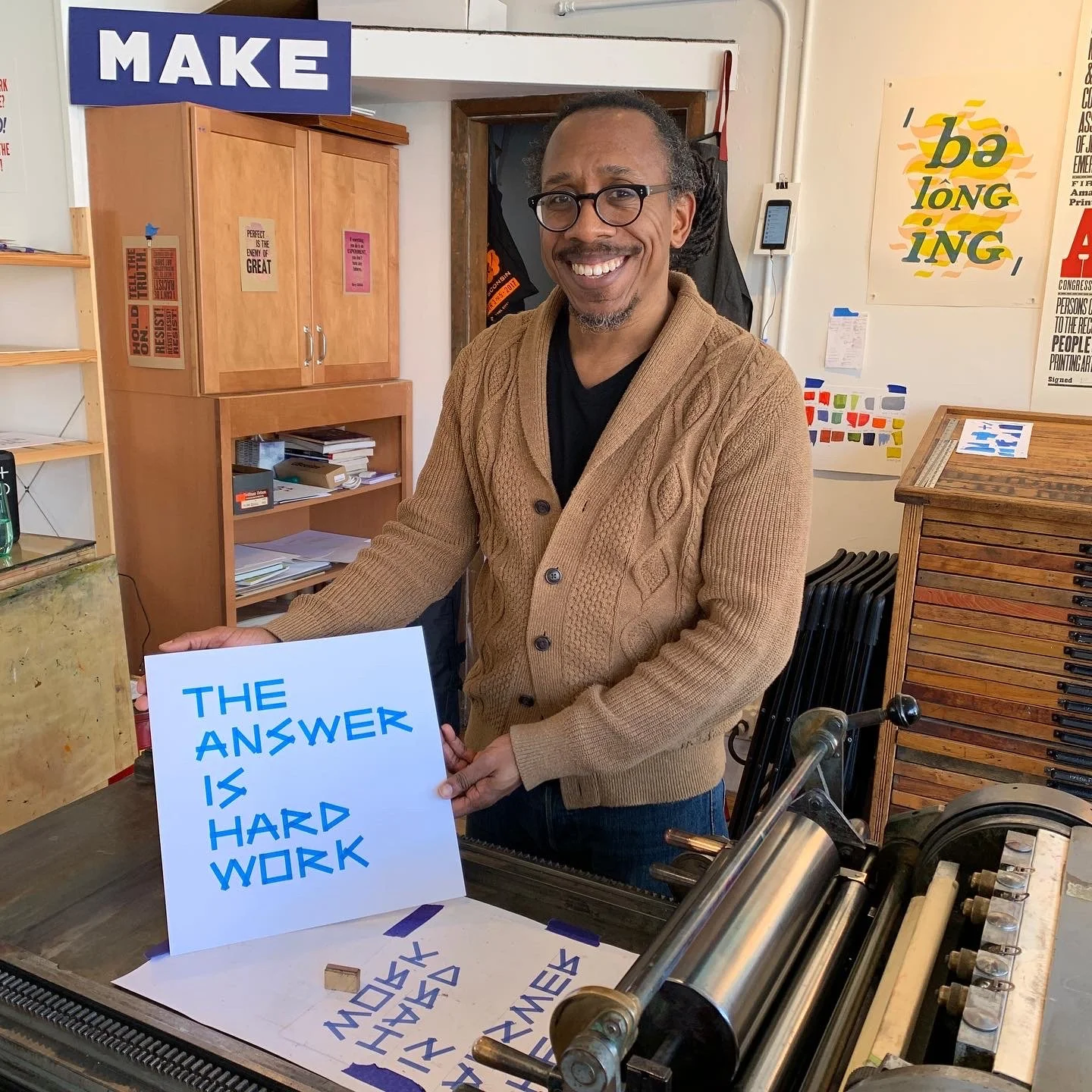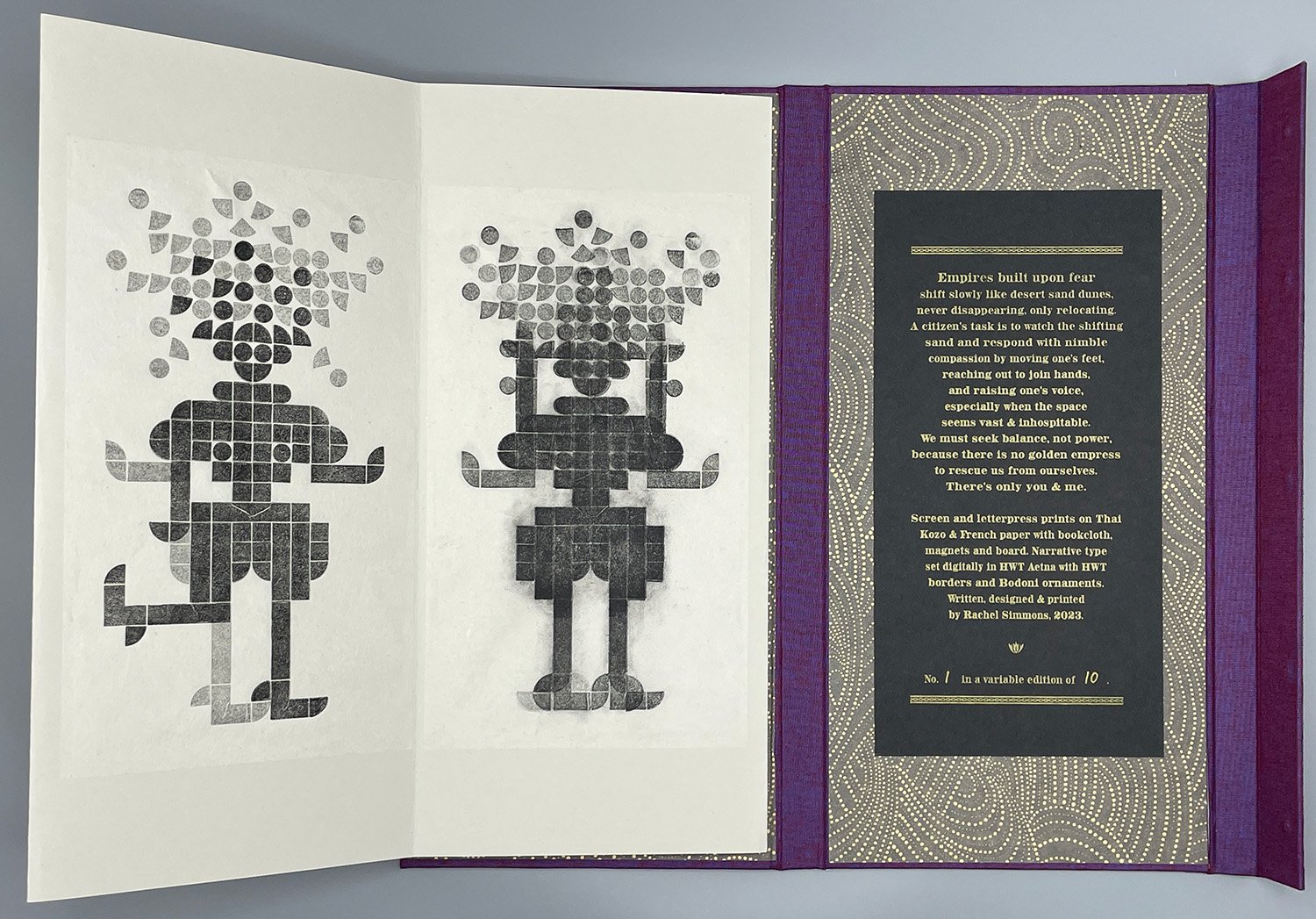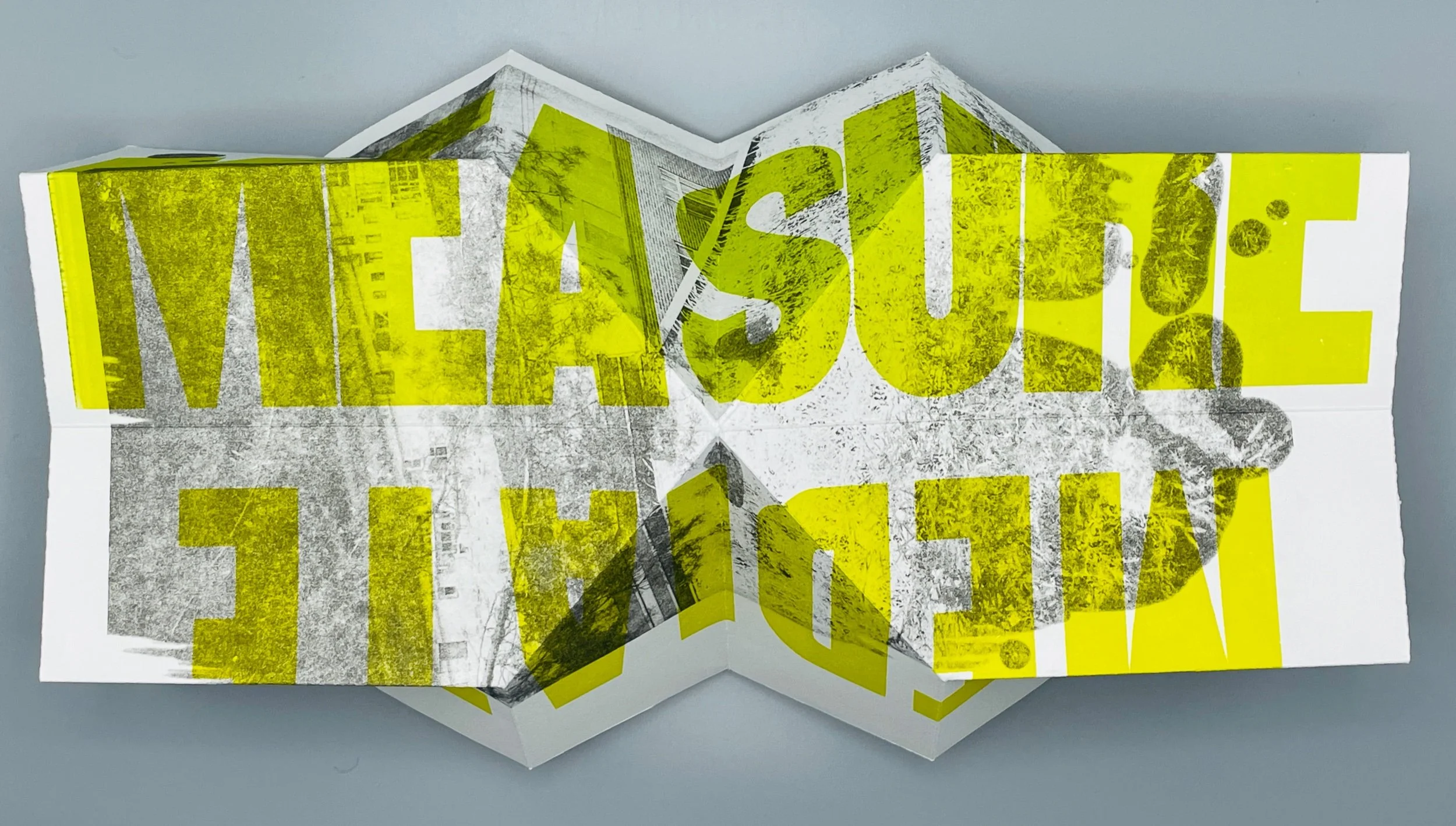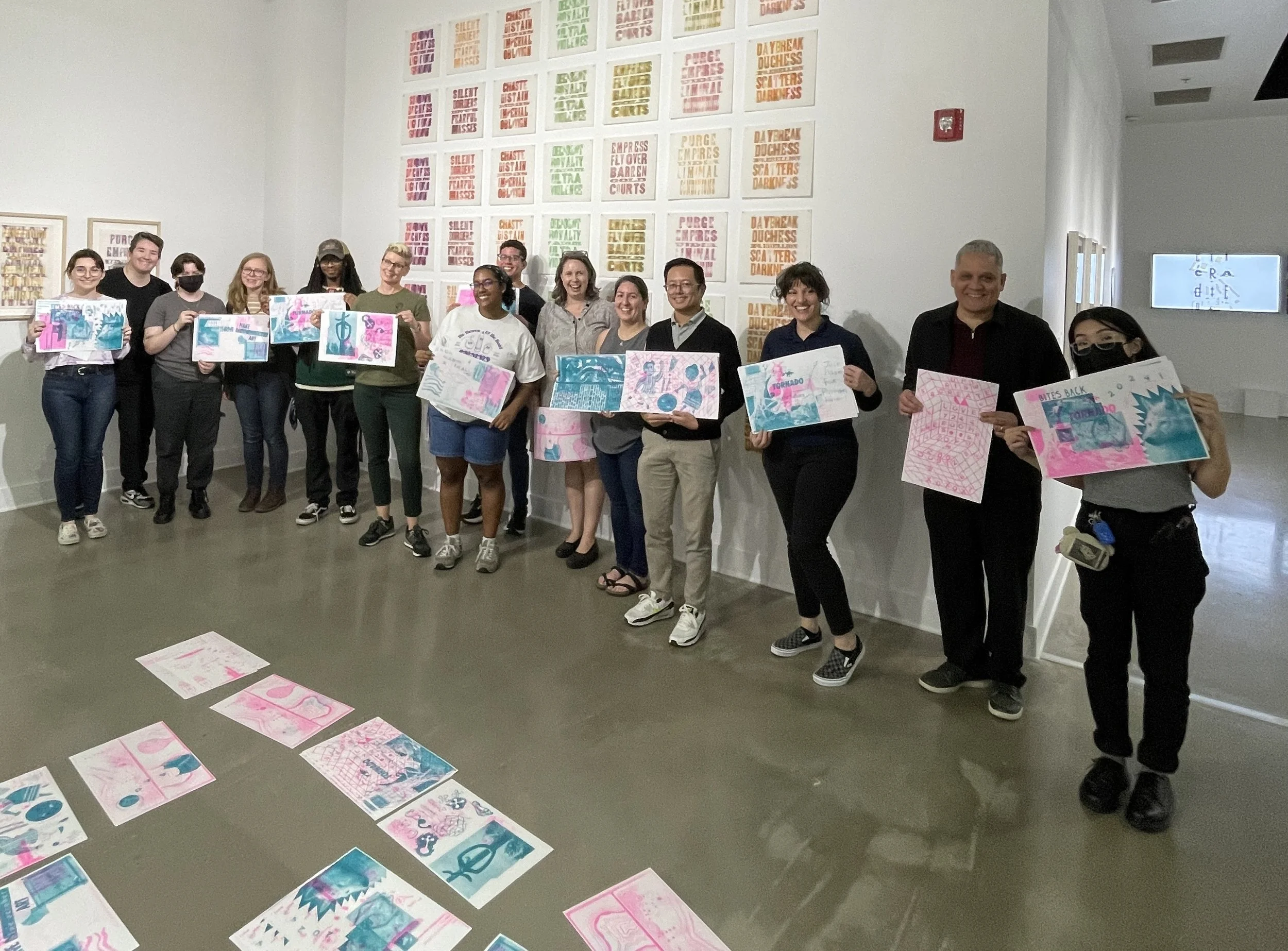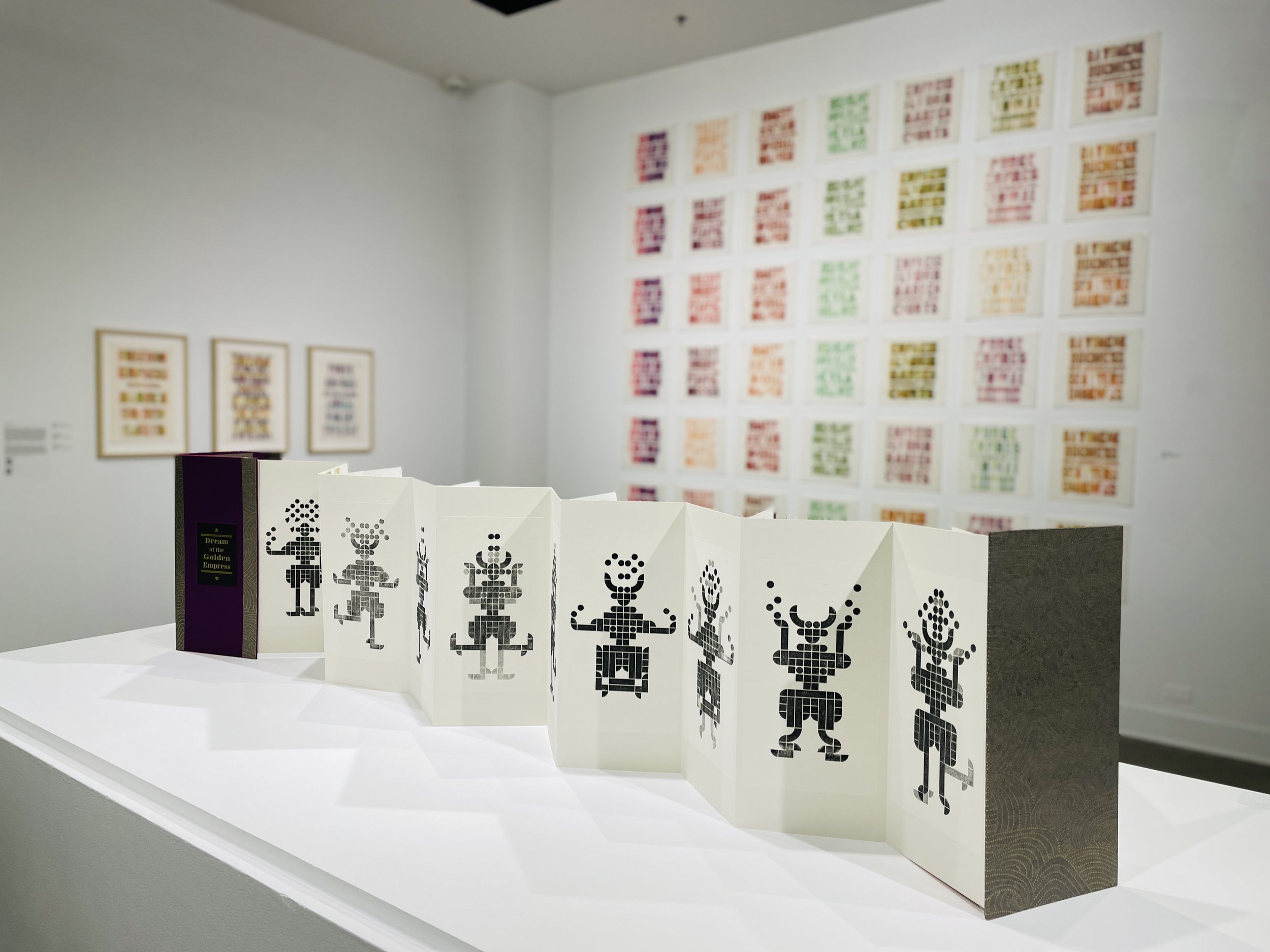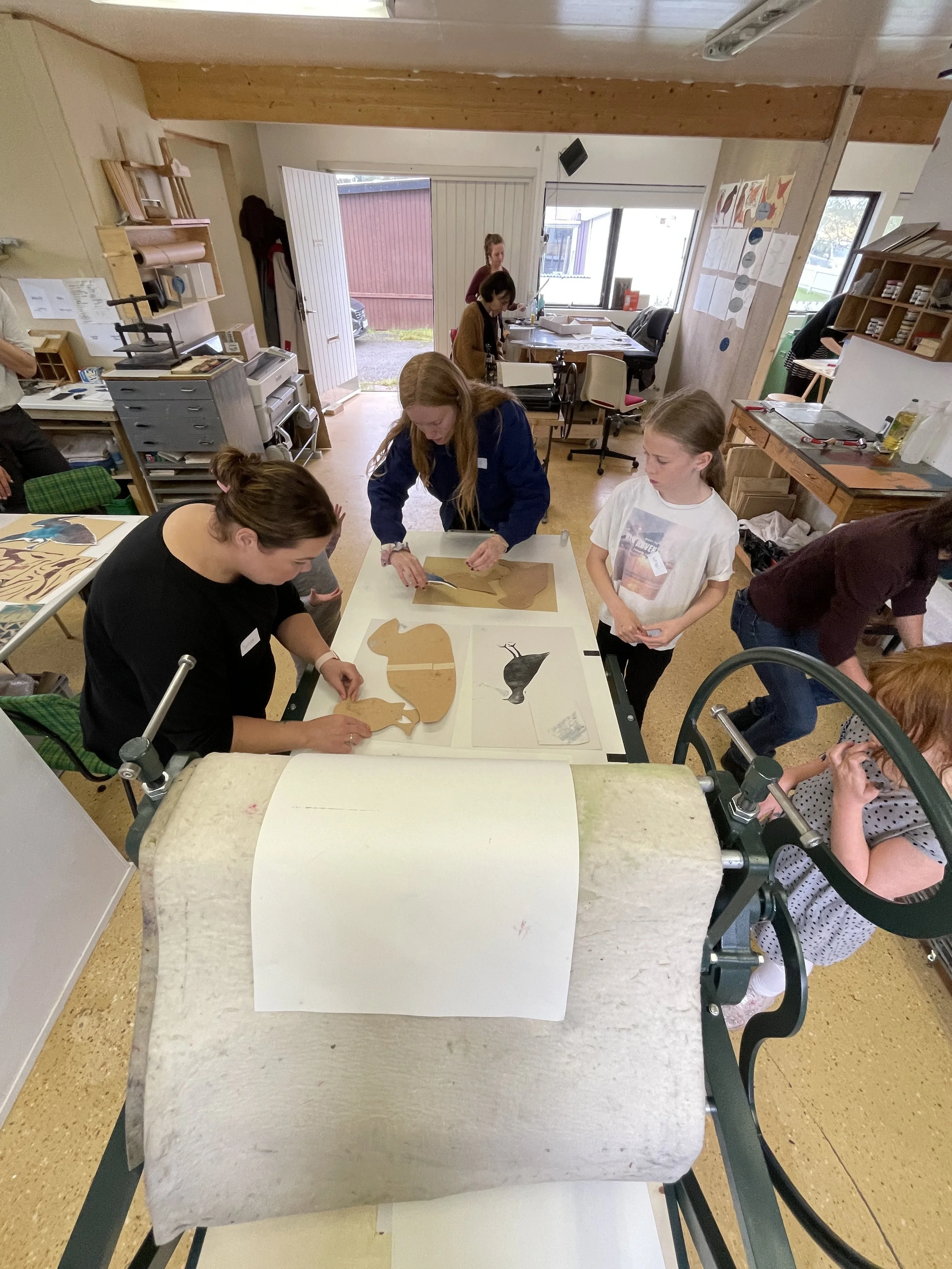RACHEL Simmons
Self-Portrait, Near Sossusvlei, Namibia in 2014
Rachel Simmons is an American artist whose creative practice includes printmaking, book art, zines and socailly engaged art.. She studied with Bosnian artist Tanja Softić as an undergrad at Rollins College in 1997, and two years later earned her MFA in Painting & Drawing under thesis advisor Michael Crespo from Louisiana State University. Her practice is informed by environmental and social activism, community and self-reflection. Endlessly curious about the natural world and our relationship with it, Rachel collaborates with scholars from other academic disciplines and communities to create new work. She has traveled to Antarctica, Iceland, Namibia, the Galapagos Islands and many of the US National Parks to research environmental issues pertaining to these projects. Rachel has been teaching visual journals, book art, printmaking and foundations for the Department of Art & Art History at Rollins College since 2000. Her artist’s books can be found in public & institutional collections across the US. Rachel’s curatorial experience includes Art in Odd Places, Noise with Julian Chambliss in Orlando, 2017, Common Ground: The Rollins Book Arts Collection with Deborah Prosser at the Rollins Museum of Art, 2021 and Critical Reading at RMA with Gisela Carbonell in 2024. She’s also active in the Book Arts Guild of Central Florida, directs the Rollins Book Arts Collection, and serves on the board of CBAA The Association for Book Art Education.
Rachel working with Ben Rinehart on”Fractured Fathers” in Appleton, Wisconsin in 2021.
Interdisciplinary collaborative projects include the socially engaged community project Flock, the environmental graphic narrative Future Bear with writer/historian Julian Chambliss (2010-2013) and “Visible Climate: Postcards from America’s Changing Landscapes” (2020) with geographer Lee Lines. Since 2021, Rachel has collaborated with book artists Benjamin D. Rinehart (above) and Ben Blount (below) and writer Vidhu Aggarwal. She is currently working on a artist’s book project with writer Chrissy Kolaya. Rachel has traveled to Antarctica, Iceland, Namibia, the Galapagos Islands, Hawaii and many of the US National Parks to research environmental issues pertaining to her projects.
Rachel and her students collaborated with Ben Blount of Evanston, IL on an artist’s book titled “An (Other)”. This is Ben in his studio, Make.
Dream of the Golden Empress, 2023, limited edition artist’s book, collected by Savannah College of Art & Design, Bainbridge Museum of Art
Rachel's artist’s books—which address personal, environmental and social issues—are available from her online shop as well as from Vamp and Tramp Booksellers, Booklyn, Abecedarian Artists’ Books, The Minnesota Center for Book Arts shop and 23Sandy Gallery. Her work can be found in public & institutional collections across the US including The Newberry Library, Parsons, Bainbridge Island Museum of Art, Baylor University, Yale University, University of Central Florida, Savannah College of Art and Design, CalPoly, University of Chicago, The Berkeley Environmental Design Library, Miami University, Tufts University, Scripps College and many more (see the full list below). Her work has been exhibited regionally, nationally, internationally at venues such as The San Francisco Center for the Book, The American Association for the Advancement of Science, in Washington, D.C., the Florence Biennale in Italy and the Deiglan Gallery in Akureyi, Iceland. Her socially engaged project, Flock, explores the particularities of our human relationship with birds by inviting community participants to become birdwatchers and artistic collaborators. Rachel was the 2009 recipient of the Service-Learning Faculty Award for the State of Florida from Florida Campus Compact and the following year, delivered a Ted talk about her practice, “Green Art” at Tedx Orlando. (CV available below).
Page from “Measure/Mediate” published in 2024
Follow rachel on instagram @bearwithjetpack
ABOUT MY WORK
As a visual artist, I communicate my boundless curiosity about nature, philosophy, self and community through my artist’s books, prints, zines, journals, comics and installations. The impulse to connect art & science stems from my interdisciplinary undergraduate education where I was encouraged to consider complex global issues from various disciplinary perspectives. I'm drawn to a variety of research interests including sustainability, climate change and social justice; I often travel and collaborate with colleagues in other fields who also see art as an exciting platform for interdisciplinary research and social change. Writing is central to my practice because I am magnetically drawn to the complex relationship between text and image as well as sequence, time and narrative in artist’s books.
Drawing from the “Souvenir” series depicting an iceberg from the Lemaire Channel in the Antarctic Peninsula.
Traveling has broadened my perspective as an artist and a global citizen; I have developed bodies of work around my travels, always using these opportunities to reflect on our complex relationship with nature. In 2006, I began thinking more and more about the declining health of the oceans, witnessed first-hand on trips to the Pacific islands of Galápagos and Hawaii; and in response I made a body of work titled Wonders of the Sea. Later, after two consecutive voyages to the Antarctic Peninsula, I shifted my focus towards studying the effects of ecotourism, climate change and exploration on the polar landscape in Terra Nova. In Flock, my aim is once again to explore our relationship to nature, this time through the fascinating subculture of birdwatching. To work effectively in such a wide-ranging manner, with so many perspectives and disciplines in the mix, I often collaborate with colleagues in other fields who also see art as an exciting platform for interdisciplinary research and social change. Projects with physicist Thomas Moore, environmental scientist Lee Lines, marine biologist Kathryn Patterson Sutherland and interdisciplinary scholar Julian Chambliss, have challenged viewers to face cultural assumptions about the methodologies of artists and scientists as we create work that blurs the boundaries of our disciplines.
A recent collaborative risograph workshop co-facilitated at University of Central Florida with Chrissy Kolaya, Ashley Taylor.
There is another essential ingredient in my work––community. To engage viewers as active participants, I have been practicing socially engaged art since I began teaching in 2000. Printmakers are by nature collaborative people anyway. We share communal work spaces and equipment; we have always been at the heart of spreading thoughts and ideas to the general public. As a contemporary artist, I use printmaking to communicate, build community and inspire social change. Almost every project I start has a social component, whether I am working directly with community members to make a flock of bird prints or whether I am teaching my students how to design collaborative community projects themselves.
Rachel’s work was on display in Type Out Loud at the University of Central Florida, an exhibition focused on socially engaged letterpress artists co-curated by Ashley Taylor and Dori Griffin.
Aside from their inherent connections to community-building, printmaking and book arts are central to my practice because I am drawn to the complex relationship between text and image. Through letterpress, I can feel the individual weight of metal and wooden letters and more carefully contemplate the expressive potential of typography. I chose the color & translucency of the ink, the typefaces and texture of the paper to create an overall concept for each sound-based text-image.
I have always been a writer——keeping daily journals, travel journals and altering books since I was young. Working with letterpress allows me to feel text as a physical material; choosing each metal or wooden letter with my hands slows my thinking, allowing time to carefully consider words as physical objects. I integrate text into almost everything I make—zines, comics, altered books, artists book editions and visual journals. It is absolutely at the heart of my practice—as essential to my ability to express myself as my relationships with my collaborators and my students.
-Rachel Simmons, 2024
Typesetting for “How to Speak to Birds” in the letterpress studio at Penland's Winter Residency, 2018, photo by Rachel Simmons
Participants in Flock in Eastern Iceland, 2022.


